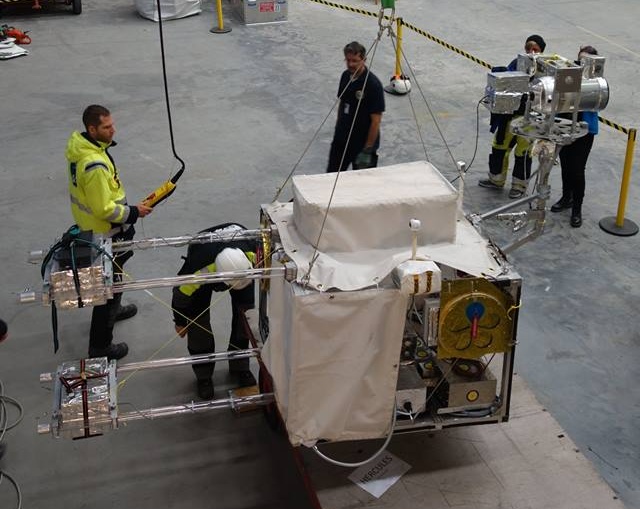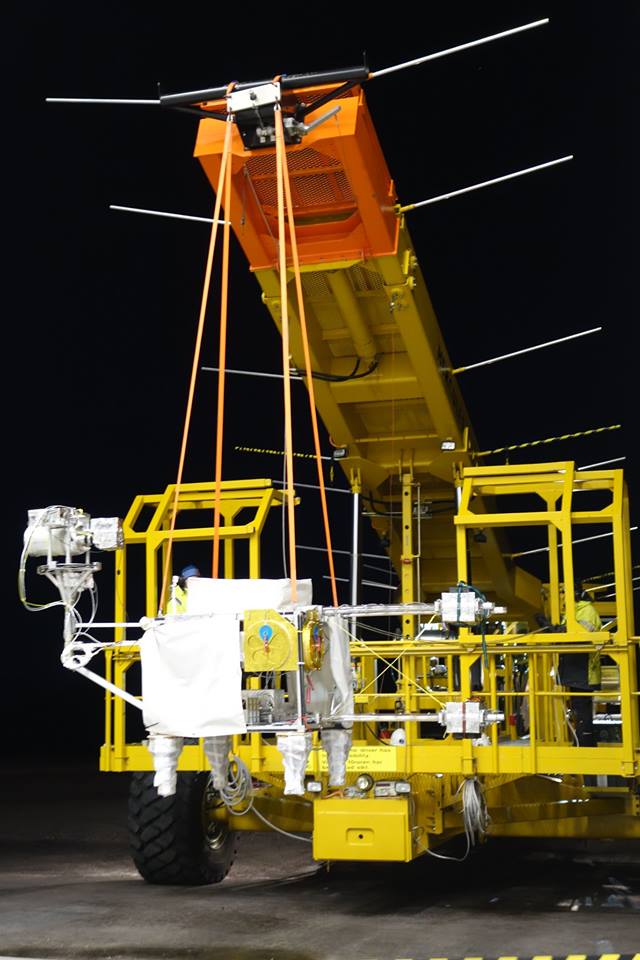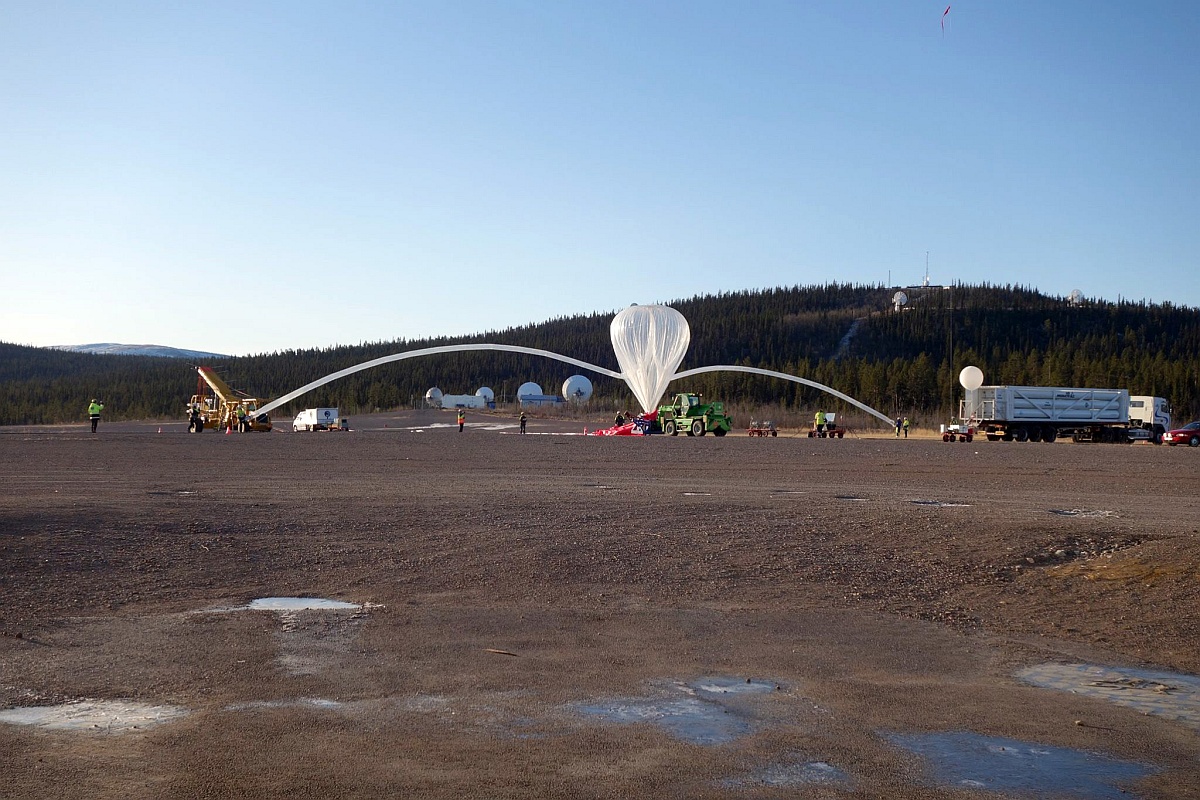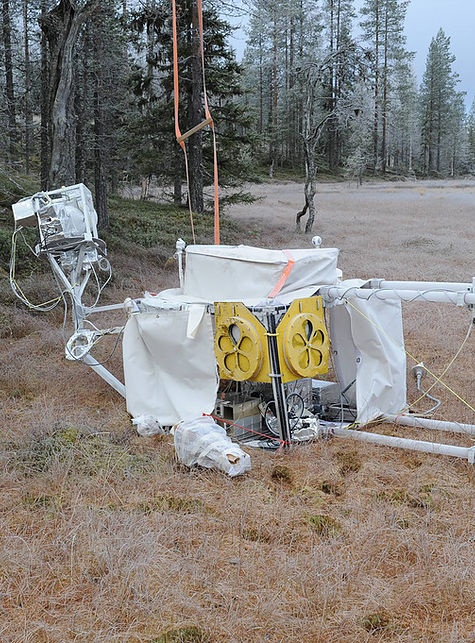Purpose of the flight and payload description
BEXUS which stands for Balloon Experiments for University Students is a project part of the REXUS/BEXUs initiative that allows students from universities and higher education colleges across Europe and more recently also Canada to carry out scientific and technological experiments on stratospheric research balloons. The basic idea behind BEXUS is to provide an experimental space platform for students in different areas of interest such as atmospheric research, fluid physics, magnetic field, materials science, radiations physics, astrophysics, biology and also to serve as a platform for new technology demonstrations.
Each year, two balloons are launched from the European Space Range (ESRANGE) base near Kiruna, Sweden each carrying several experiments assembled on a medium-sized gondola (1.16 m x 1.16 m x 0.84 m). The total lifted-mass is approximately 300kg on each flight. With each payload weighing between 30 and 112 kg that means that 4 student experiments can be accomodated per gondola.
The first five flights of the program were carried out under sponsorship of the Swedish Space Corporation that offered available space on yearly technological flights carried out at ESRANGE. Since 2008, BEXUS is realised under a bilateral Agency Agreement between the German Aerospace Center (DLR) and the Swedish National Space Agency (SNSA). The Swedish share of the payload is made available to students from other European countries through a collaboration with the European Space Agency (ESA). EuroLaunch, a cooperation between ESRANGE and the Mobile Rocket Base (MORABA) of DLR, is the organism responsible for the campaign management and operations of the launch vehicles.
On each cycle of the initiative, experts from DLR, SSC, ZARM (Center of Applied Space Technology and Microgravity, University of Bremen) and ESA provide technical support to the student teams throughout the project. It begins with a Call for Proposals, followed by a condensed space project lifecycle, including typical design phases and reviews, culminating in the launch of the experiments and publication of the final reports.
Details of the balloon flight
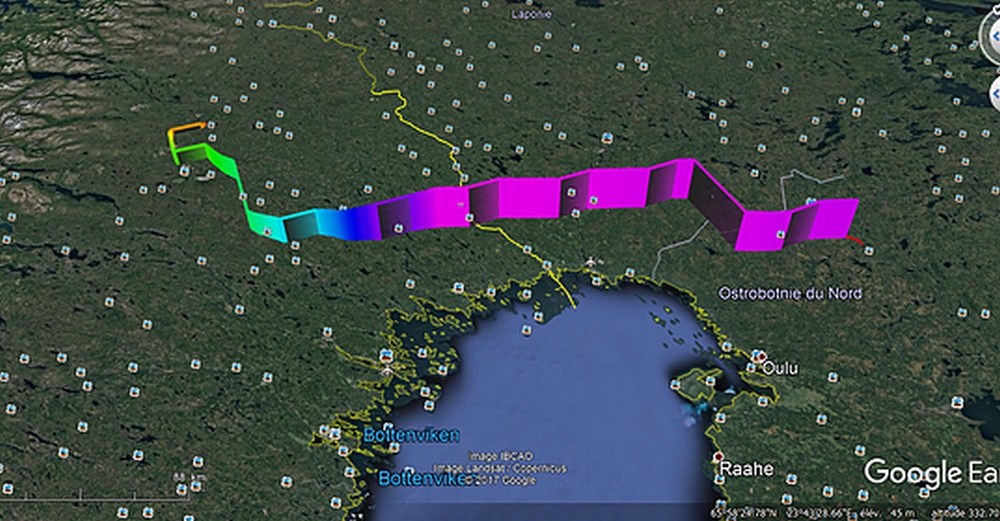
Balloon launched on: 10/20/2017 at 9:26 utc
Launch site: European Space Range, Kiruna, Sweden
Balloon launched by: Swedish Space Corporation (SSC)
Balloon manufacturer/size/composition: Zero Pressure Balloon 12.000 m3
End of flight (L for landing time, W for last contact, otherwise termination time): 10/20/2017 at 14:17 utc
Balloon flight duration (F: time at float only, otherwise total flight time in d:days / h:hours or m:minutes - ): 4 h 50 m
Landing site: In North Finland
Campaign: BEXUS
The balloon was launched by dynamic method at 10:26 local time. Enexpectedly the balloon achieved a much slower ascent velocity, requiring over 3.5 hours to reach a float altitude of 25.85 km. After a long flight, but short float, the flight was terminated in Northern Finland.
The experiments that were part of Bexus 25 flight were:
HAMBURG (High Altitude Meteoroids-dust-catching-Balloon constrUcted by a Revolutionary Generation) developed by Technical University of Hamburg, Germany, the goal of the experiment was the gathering and analysing of iron-nickel-containing micrometeoroid, meteorid- and cosmic dust in many atmospheric layers (primary stratosphere) and the creation of a height particle concentration-profile.
IRIS (Infra-Red albedo measurements In Stratosphere) developed by Luleå University of Technology, Sweden was meant to measure the incoming radiation from the Sun and Earth's reflection from snow covered surfaces, vegetation in the Arctic and different types of clouds and also to analyse the spectral signature characteristic of terrestrial vegetation, known as "red edge".
LOTUS-XD (Light power and Optical Transmission experiment of University Students - eXtra Data) developed by TU Dresden, Germany is focused on wireless power transmission which gives the opportunity to provide energy to space devices especially landers and rovers in dark space regions like craters or the polar caps of the moon and mars. LOTUS_XD tested in the BEXUS 24 gondola, in a near space environment, several LaserPower-Converter(LPC) laser pairs to investigate which one was the best for that purpose.
SUNBYTE (Sheffield University Nova Balloon Lifted TElescope) developed at the University of Sheffield, United Kingdom is a project aimed to create a new technique for solar observations by using a high altitude balloon to lift a telescope above the majority of the atmosphere to an altitude of 30-40km. It will have the potential to capture images of much better quality.
External references
- BEXUS website
- BEXUS 24 and 25 successfully launched from Esrange Space Center in northern Sweden ESA website
- HAMBURG Space Research (HHSR) website
- Project IRIS website
14280If you consider this website interesting or useful, you can help me to keep it up and running with a small donation to cover the operational costs. Just the equivalent of the price of a cup of coffee helps a lot.

